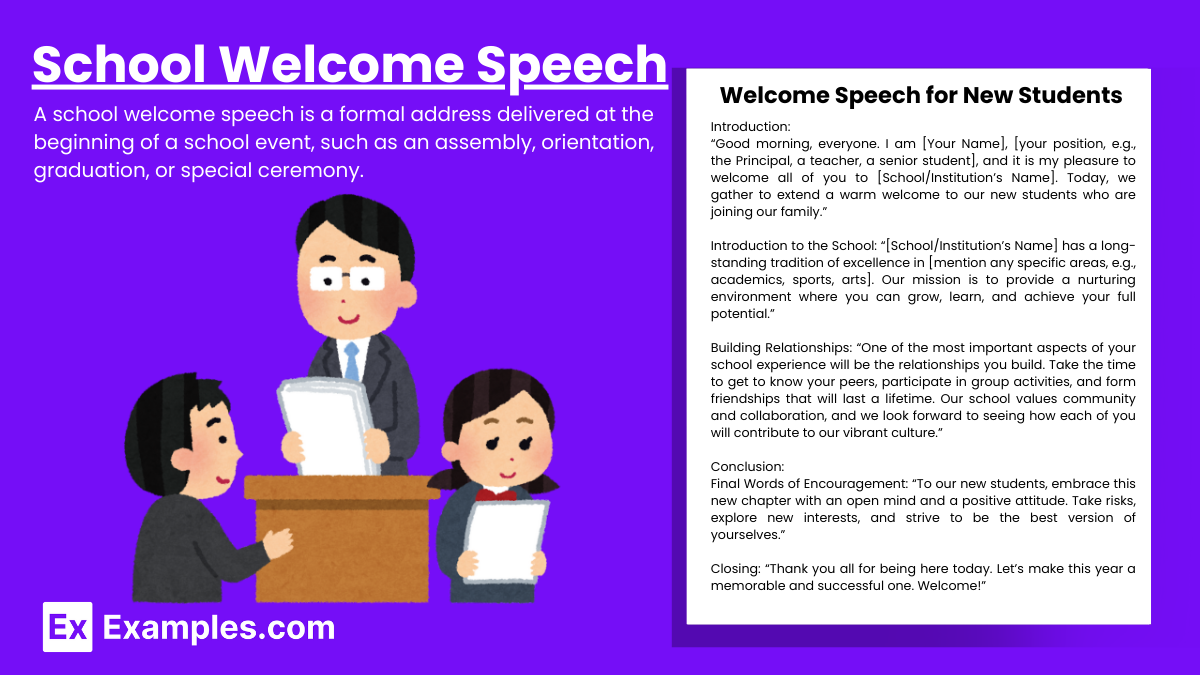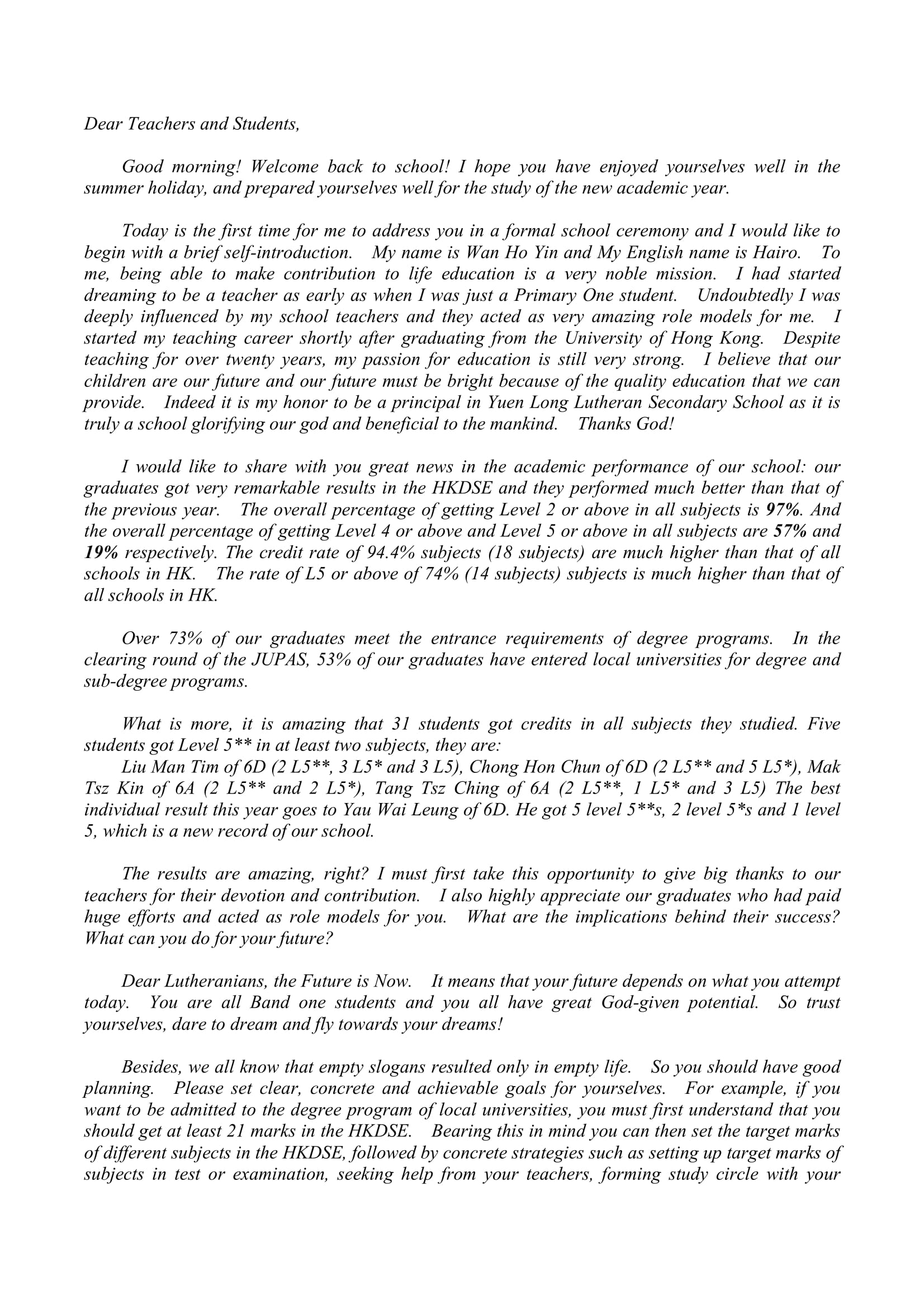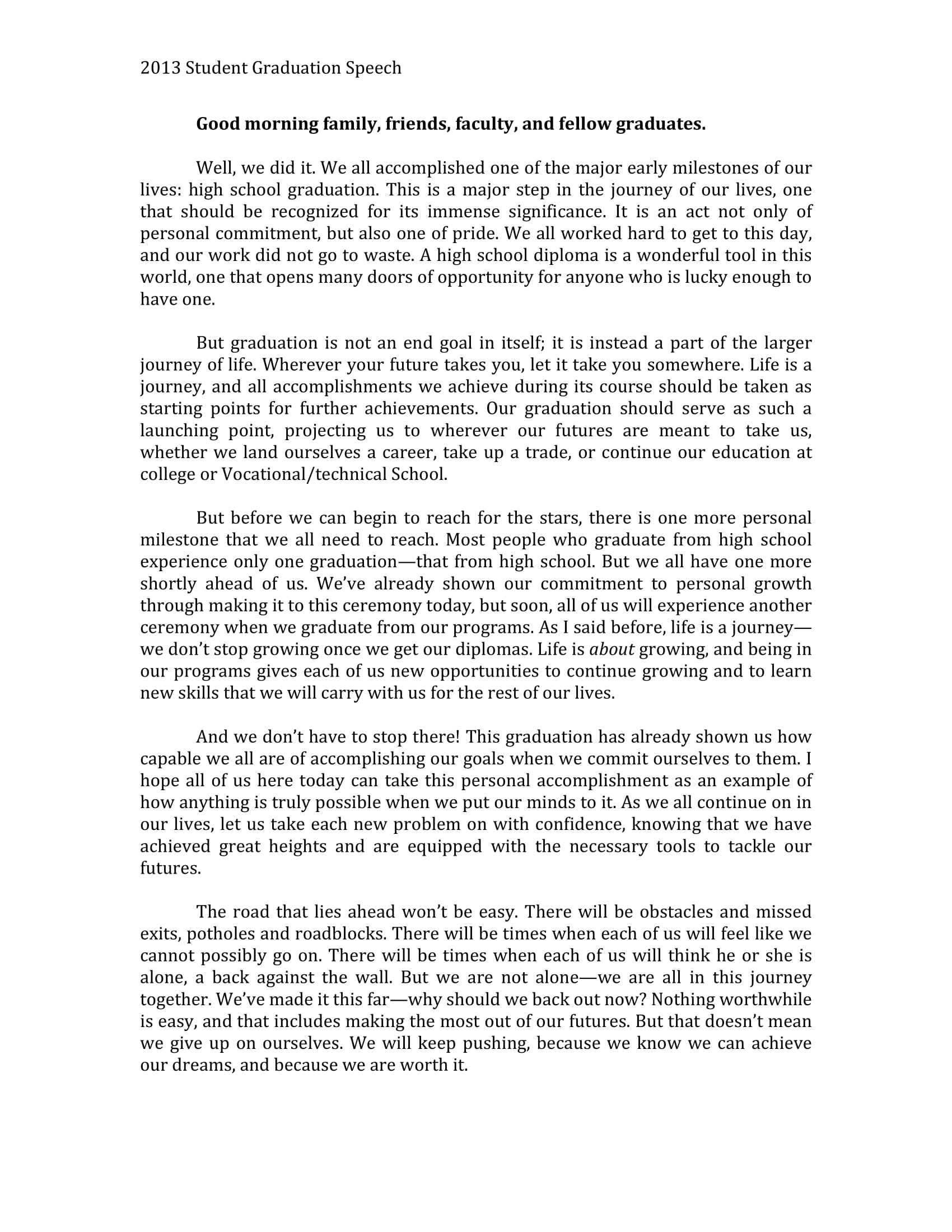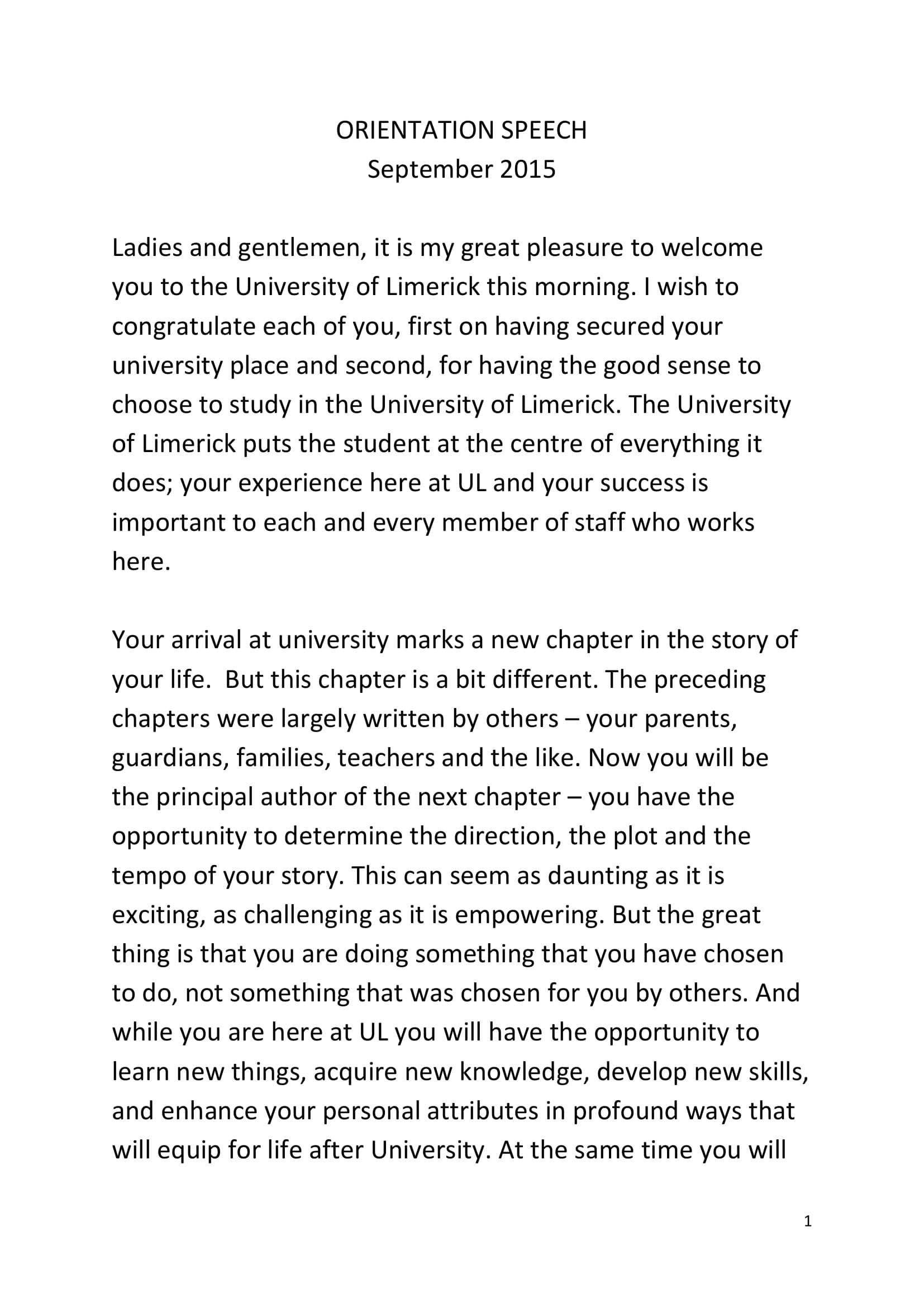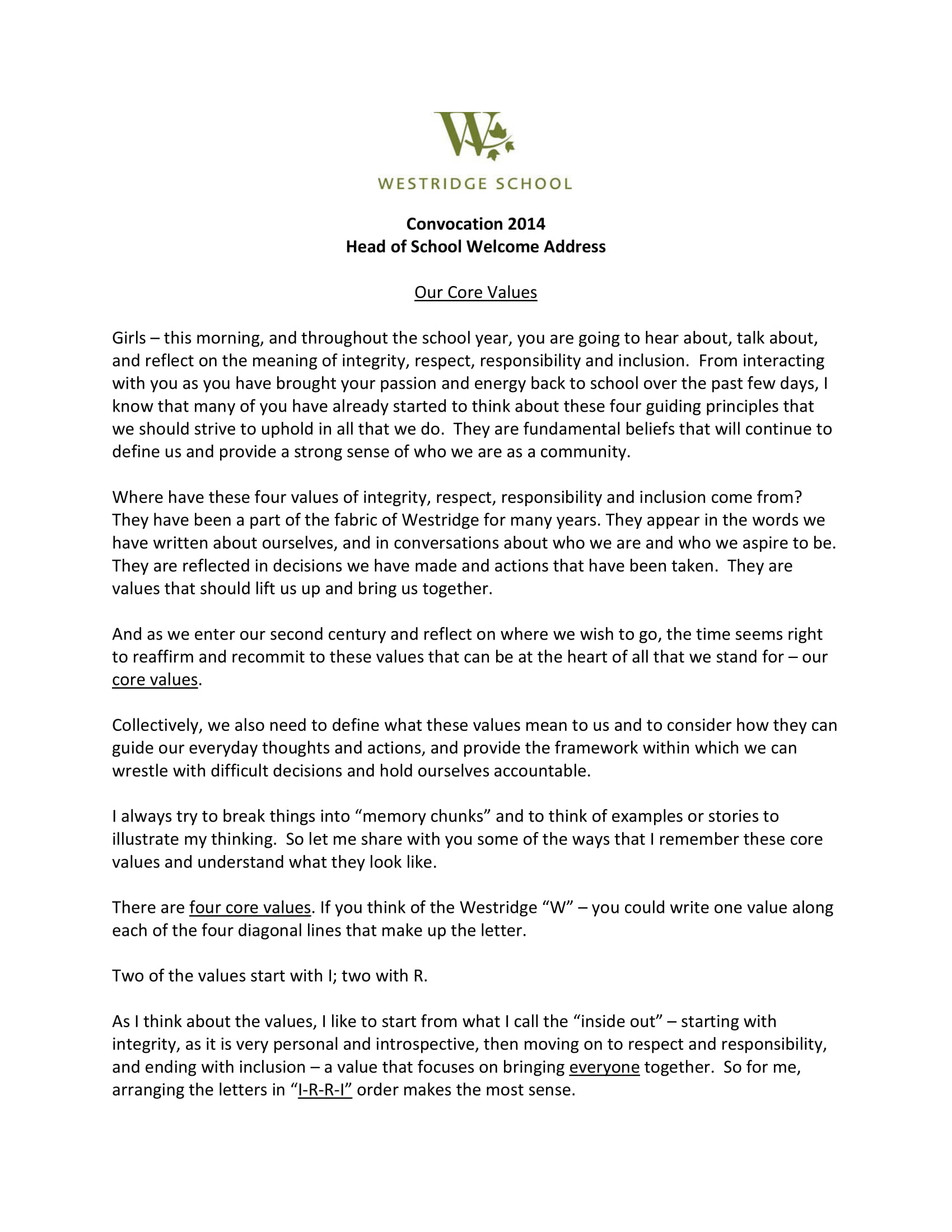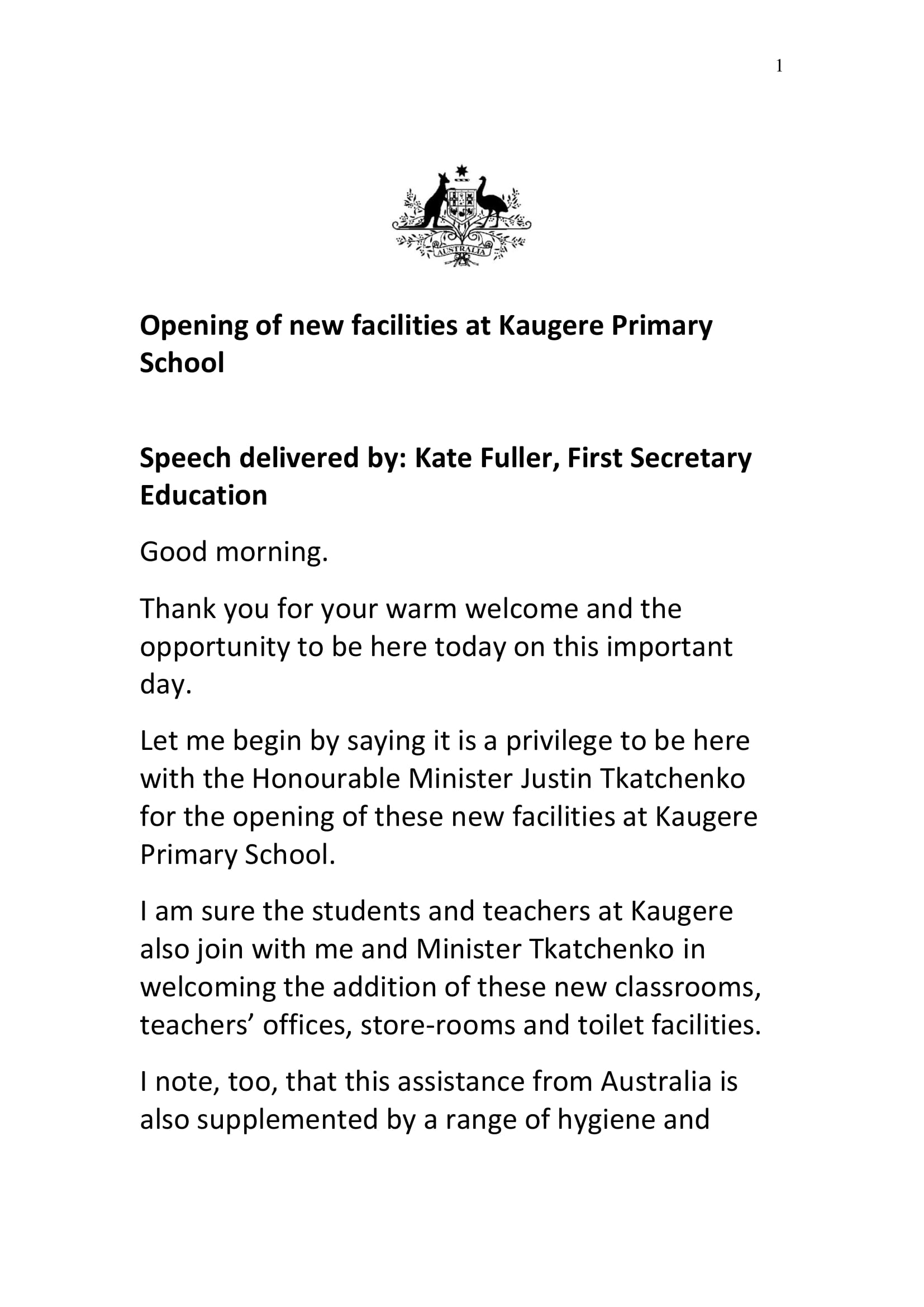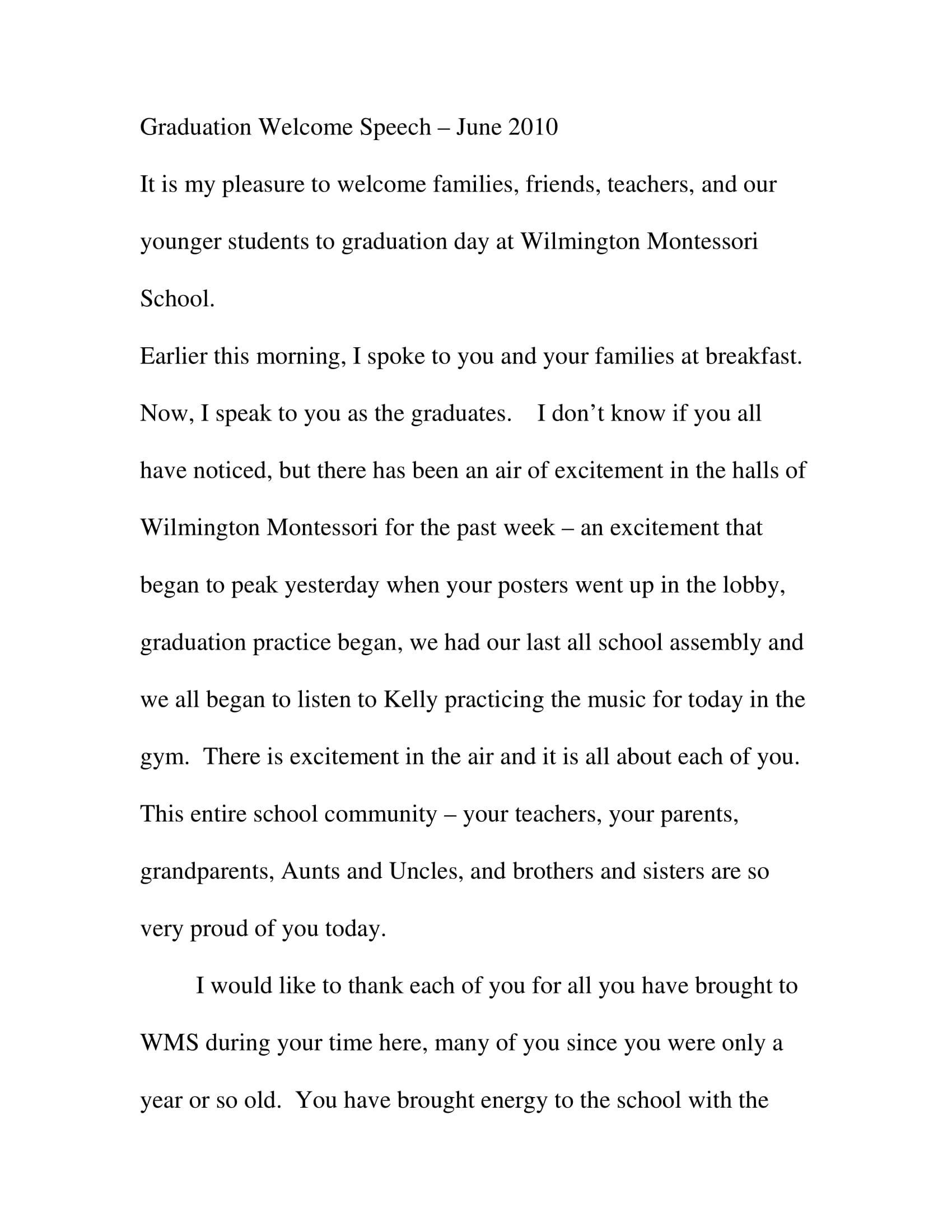10+ School Welcome Speech Examples to Download
A school welcome speech is a formal address delivered at the beginning of a school event, such as an assembly, orientation, graduation, or special ceremony. The purpose of the welcome speech is to greet and acknowledge the attendees, including students, parents, teachers, and distinguished guests. It sets the tone for the event, provides an overview of the agenda, and highlights the significance of the occasion. The speech often includes expressions of gratitude to organizers, participants, and supporters, and encourages engagement and participation from the audience.
What is a School Welcome Speech?
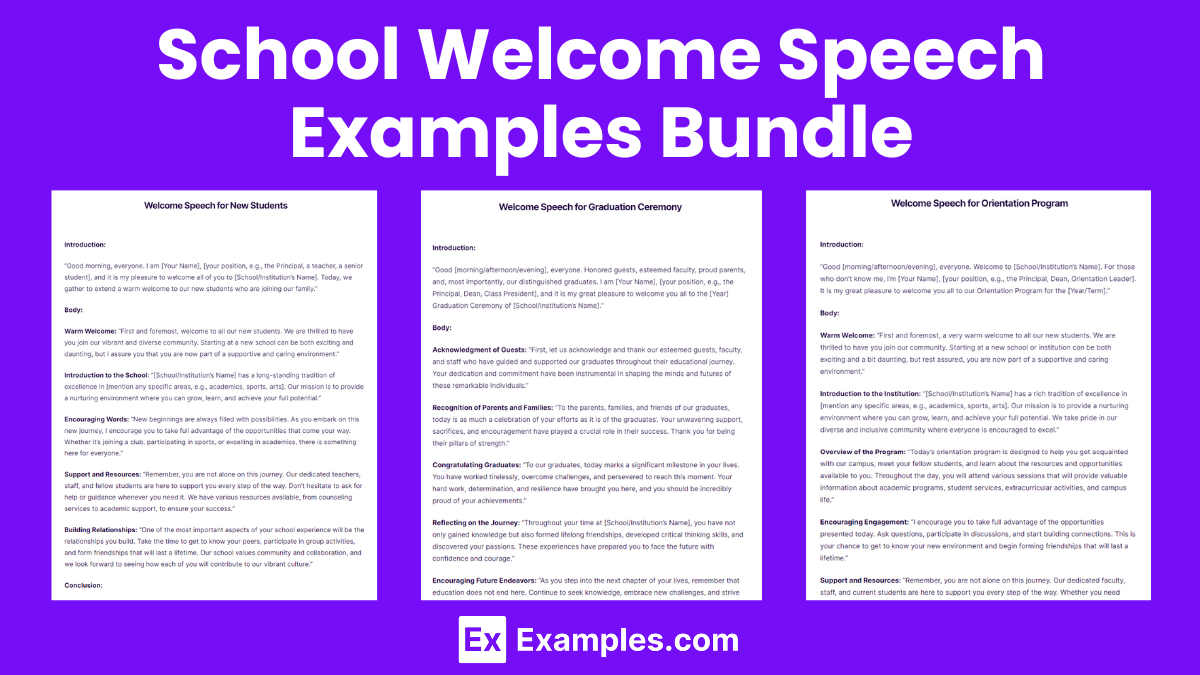
School Welcome Speech Bundle Download
School Welcome Speech Format
Greeting
- Start with a Warm Salutation:
- Example: “Good [morning/afternoon/evening], Ladies and Gentlemen.”
Introduction
- Introduce Yourself:
- Example: “I am [Your Name], and I am honored to be your host for today’s event.”
Acknowledgment
- Recognize Important Guests:
- Example: “We are delighted to have with us [Guest’s Name], [their title/role].”
Purpose of the Event
- Explain the Significance:
- Example: “Today, we gather to celebrate [mention the purpose, such as achievements, a special occasion, or the start of a new school year].”
Program Overview
- Outline Key Activities:
- Example: “Our program today includes inspiring speeches, performances, and awards.”
Gratitude
- Thank Organizers and Contributors:
- Example: “I would like to extend my heartfelt thanks to our organizing committee and sponsors.”
Engagement
- Encourage Participation:
- Example: “We encourage everyone to participate actively and enjoy every moment of this event.”
Transition
- Introduce the First Segment:
- Example: “Without further ado, let us begin our program. Please join me in welcoming our first performer/speaker, [Name], who will [briefly describe the performance or presentation].”
Conclusion
- End on a Positive Note:
- Example: “Thank you, and let’s make this event unforgettable!”
School Welcome Speech Example
Ladies and Gentlemen,
Good morning,
I am [Your Name], and I am honored to be your host for today’s event. We are delighted to have with us [Guest’s Name], [their title/role]. Today, we gather to celebrate the achievements of our students and the dedication of our faculty and staff. This event marks a special occasion as we recognize the hard work and perseverance that have brought us to this moment.
Our program today includes inspiring speeches, outstanding performances, and the presentation of awards. Each segment has been thoughtfully planned to ensure that you have an enjoyable and memorable time. We are privileged to witness the incredible talents and achievements of our students.
I would like to extend my heartfelt thanks to our organizing committee and sponsors. Your efforts and contributions have made this event possible. To our teachers and staff, thank you for your unwavering support and dedication to our students’ success. To our parents and families, your encouragement and involvement are vital to our school community.
Students, this day is a celebration of your hard work, creativity, and determination. You have shown resilience and excellence in your endeavors, and we are incredibly proud of you. Keep striving for greatness and continue to make us proud.
We encourage everyone to participate actively and enjoy every moment of this event. Your enthusiasm and support make our school community strong and vibrant.
Without further ado, let us officially begin our program. Please join me in welcoming our first performer, [Name], who will be presenting [briefly describe the performance].
Thank you, and let’s make this event unforgettable!
[Your Name]
School Welcome Speech Short Example
Ladies and Gentlemen,
Good morning,
I am [Your Name], and I am honored to be your host for today’s event. We are delighted to have with us [Guest’s Name], [their title/role]. Today, we gather to celebrate the achievements of our students and the dedication of our faculty and staff.
Our program includes inspiring speeches, outstanding performances, and the presentation of awards. I would like to extend my heartfelt thanks to our organizing committee and sponsors for making this event possible. To our teachers, staff, and parents, thank you for your unwavering support.
Students, this day is a celebration of your hard work and determination. We are incredibly proud of you.
Without further ado, let us officially begin our program. Please join me in welcoming our first performer, [Name], who will be presenting [briefly describe the performance].
Thank you, and enjoy the event!
[Your Name]
More School Welcome Speech Examples and Samples
- Welcome Speech for New Students
- Welcome Speech for Graduation Ceremony
- Welcome Speech for Orientation Program
- Welcome Speech for Annual Day
- Welcome Speech for Sports Day
- Welcome Speech for Cultural Event
- Welcome Speech for School Assembly
- Welcome Speech for Parent-Teacher Meeting
- Welcome Speech for Science Fair
Parts of a Welcome Speech
Your welcome speech should be concise and understandable to your audience. You must be able to deliver all the important information without making the speech a one hour long. Generally, you speech must only take five minutes, that way you can guarantee that the everyone’s attention is still on you. To help you make and structure an effective welcome speech, here is a list of the parts your speech must have:
- A formal greeting
- A brief introduction
- Short background information
- Share some goals and motivation
- Sending off in a motivational manner
You may also see appreciation speech examples & samples.
Welcome Speech by Principal Example
Graduation Welcome Speech Example
Orientation Welcome Speech Example
School Head Welcome Speech Example
New Facilities Opening Welcome Speech Example
New Graduation Welcome Speech Example
How to Write a School Welcome Speech
1. Start with a Warm Greeting
- Open with a Friendly Salutation: Address the audience warmly.
- Example: “Good [morning/afternoon/evening], Ladies and Gentlemen.”
2. Introduce Yourself
- State Your Name and Role: Briefly introduce yourself.
- Example: “I am [Your Name], and I am honored to be your host for today’s event.”
3. Acknowledge Key Individuals
- Mention Important Guests: Recognize any special guests or key figures.
- Example: “We are delighted to have with us [Guest’s Name], [their title/role].”
4. Set the Tone for the Event
- Describe the Purpose: Briefly explain the purpose of the event.
- Example: “Today, we gather to celebrate [mention the purpose, such as achievements, milestones, or special occasions].”
5. Provide an Overview of the Program
- Outline the Agenda: Give a brief overview of the main activities.
- Example: “Our program includes inspiring speeches, performances, and awards.”
6. Express Gratitude
- Thank Organizers and Contributors: Acknowledge those who helped make the event possible.
- Example: “I would like to extend my heartfelt thanks to our organizing committee and sponsors.”
7. Encourage Engagement
- Motivate the Audience: Encourage participation and engagement.
- Example: “We encourage you to participate actively and enjoy every moment.”
8. Transition to the Next Part
- Introduce the First Speaker/Activity: Smoothly transition to the next part of the program.
- Example: “Without further ado, please join me in welcoming our first speaker, [Speaker’s Name].”
Speech Delivery Dos and Don’ts
| Dos | Don’ts |
|---|---|
| Maintain Eye Contact: Engage with your audience by looking at different sections of the room. | Avoid Reading from Notes: Relying too heavily on your notes can make your speech seem robotic and disengaging. |
| Practice: Rehearse your speech multiple times to become comfortable with the material and delivery. | Speak Monotonously: Use varied tone and pitch to keep your audience interested. |
| Speak Clearly and Slowly: Enunciate your words and pace your speech to ensure understanding. | Rush Through: Speaking too quickly can make it difficult for the audience to follow. |
| Use Natural Gestures: Emphasize points with appropriate hand movements. | Overuse Filler Words: Avoid using too many “um,” “uh,” and “like.” |
| Engage the Audience: Ask rhetorical questions or invite participation to keep the audience involved. | Turn Your Back on the Audience: Always face the audience to maintain connection. |
| Stay Calm and Confident: Take deep breaths if you feel nervous and maintain a confident posture. | Show Nervous Habits: Avoid fidgeting, tapping, or any distracting movements. |
| Use Visual Aids: Enhance your message with slides or props if appropriate. | Overload with Information: Keep your slides simple and avoid too much text. |
| Thank the Audience: Express gratitude for their time and attention at the end of your speech. | Ignore the Audience’s Reactions: Be mindful of their body language and adjust if they seem disengaged. |
How to Deliver an Iconic Welcome Speech
When its you first time delivering a speech it can be quite nerve-wracking most especially when you are delivering it in front of people you know, you can feel fidgety and vulnerable which can affect your delivery. But do not fret, this guide will help you deliver an iconic welcome speech.
1. Research and prepare
Before anything else, you must be prepared. If you have been given the assignment of delivering a welcome speech weeks or even days before the event, you have enough time to do a research. If the event has some special guests, research about them especially if you intend to mention their names. Research on the purpose and objectives of the event, the theme that the event is applying, and everything else that you should know. This will prevent you from stuttering or blacking out since you already have a clear background about these important information. You may also see launch speech examples.
2. Write a draft
Writing a draft ensures that you have included all the information you need to deliver. It allows you to have a clear physical copy of what you’re going to say in your speech. this will also allow you to correct and replace some contents of the speech that you think are unnecessary. A draft can also help you structure your speech better since you can easily correct if you think the sequence of your contents are off. A draft can ensure that the flow of your speech is logical and comprehensive so that you audience can easily understand the purpose of your general speech.
3. Understand the purpose of your message
Before the audience, you must first understand why you’re making a speech. How can you convey a good message if you do not understand it? After you have written your draft, read and reread it, internalize and make sure you understand your objective so that you can effectively convey it to your audience. This will also help you feel confident with your speech and can great affect how well you deliver your speech. You may also like presentation speech examples & samples.
4. Familiarize your speech
You do not need to memorize you speech; memorizing the whole speech still has a high chance of you forgetting the words especially when your nervousness overcomes. Therefore, it is still better to familiarize your entire speech. This way when you read a specific word in your cue card you will immediately remember what comes next. This will also help you avoid juts reading through the the script the whole time while delivering the speech. Since you remember you cues, you can immediately deliver what’s next. You may also check out leadership speech examples & samples.
5. Practice beforehand
And the most important part of all of this is to practice, practice, practice. Practice delivering your speech in front of the mirror that way you can see the way deliver your speech. You can correct your posture, gestures and your habit of just reading. In addition, practicing your speech days before the event will also help you familiarize your speech better and you can detect if your voice quality and intonation is good or not. You might be interested in youth speech examples.
Tips for School Welcome Speech
1. Know Your Audience
- Tailor your speech to suit the audience, whether it includes students, parents, teachers, or special guests.
- Use language and references appropriate for the age group and occasion.
2. Start with a Warm Greeting
- Begin with a friendly and welcoming salutation.
- Example: “Good morning, Ladies and Gentlemen.”
3. Introduce Yourself
- Briefly introduce yourself and your role in the event.
- Example: “I am [Your Name], and I am honored to be your host for today’s event.”
4. Acknowledge Important Guests
- Recognize any distinguished guests or key figures present.
- Example: “We are delighted to have with us [Guest’s Name], [their title/role].”
5. Explain the Purpose of the Event
- Clearly state the purpose and significance of the event.
- Example: “Today, we gather to celebrate [mention the purpose, such as achievements, a special occasion, or the start of a new school year].”
6. Outline the Program
- Provide a brief overview of the key activities or highlights of the event.
- Example: “Our program today includes inspiring speeches, performances, and awards.”
7. Express Gratitude
- Thank those who made the event possible, including organizers, sponsors, and volunteers.
- Example: “I would like to extend my heartfelt thanks to our organizing committee and sponsors.”
8. Engage the Audience
- Encourage participation and enthusiasm.
- Example: “We encourage everyone to participate actively and enjoy every moment of this event.”
9. Use a Clear and Confident Voice
- Speak clearly and confidently to maintain the audience’s attention.
- Practice beforehand to become comfortable with your speech.
10. Conclude on a Positive Note
- End with a positive message or good wishes for the event.
- Example: “Thank you, and let’s make this event unforgettable!”
Uses of School Welcome Speech
- Opening Ceremonies: A welcome speech is often used to kick off significant school events such as the start of the academic year, graduation ceremonies, and annual days. It helps set a positive tone and conveys the importance of the event.
- Introducing New Students and Staff: During orientation programs for new students and staff, a welcome speech helps introduce them to the school community. It provides a brief overview of the school’s values, mission, and expectations, helping newcomers feel welcomed and integrated.
- Special Events and Celebrations: For events like sports days, cultural festivals, and awards ceremonies, a welcome speech outlines the day’s agenda and highlights the event’s significance. It helps create excitement and enthusiasm among participants and attendees.
- Parent-Teacher Meetings: A welcome speech during parent-teacher meetings establishes a positive environment for discussions about students’ progress and school initiatives. It emphasizes the collaborative relationship between parents and the school.
- Guest Lectures and Workshops: When hosting guest speakers or workshop facilitators, a welcome speech formally introduces them to the audience. It sets the stage for the event and shows appreciation for the guest’s contribution to the school community.
- Fundraising and Community Events: At fundraising events or community outreach programs, a welcome speech engages attendees by explaining the event’s purpose and goals. It helps build a sense of community and encourages participation and support.
- Setting Expectations: A welcome speech at the beginning of the school year or term helps set expectations for students and staff. It can outline important policies, upcoming projects, and the overall vision for the year, providing clarity and direction.
- Motivating and Inspiring: A well-crafted welcome speech can motivate and inspire students and staff by highlighting achievements, goals, and the importance of education. It can boost morale and encourage a positive attitude towards the upcoming challenges.
- Acknowledging Contributions: During events where volunteers, donors, or exceptional individuals are recognized, a welcome speech expresses gratitude and acknowledges their contributions. This recognition fosters a culture of appreciation and encourages continued support and involvement.
- Creating a Positive Atmosphere: A welcome speech sets the tone for the event, creating a welcoming and inclusive environment. It helps attendees feel valued and respected, enhancing their overall experience.
FAQ’s
Who typically gives a school welcome speech?
The principal, a teacher, or a student leader typically gives the school welcome speech at an event.
What is the purpose of a school welcome speech?
The speech aims to welcome attendees, introduce the event’s theme, and provide a brief overview of the program.
How long should a school welcome speech be?
A school welcome speech should be concise, typically lasting between 3 to 5 minutes.
How can I make a school welcome speech engaging?
Use a friendly tone, incorporate anecdotes or quotes, and express enthusiasm about the event and attendees.
What should be included in a school welcome speech?
Include a warm greeting, an introduction of key guests, the event’s purpose, and a brief outline of the program.
Should I practice the school welcome speech beforehand?
Yes, practicing helps ensure smooth delivery, familiarity with the content, and confidence during the actual speech.
Can humor be included in a school welcome speech?
Yes, appropriate humor can make the speech more engaging, but ensure it is respectful and relevant to the audience.
What tone should I use in a school welcome speech?
Use a friendly, inclusive, and enthusiastic tone to create a welcoming atmosphere.
How do I end a school welcome speech?
End with a positive note, expressing hope for a successful event and thanking the audience for their attention.
How do I start a school welcome speech?
Start with a warm greeting, such as “Good morning/afternoon,” followed by a welcoming statement to the audience.


